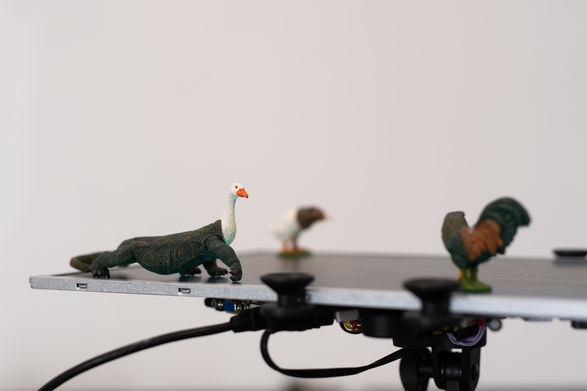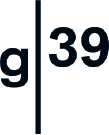nonsequences
3 - 27 March 2021
Kelly Best, Jennifer Taylor, Ian Watson, Fern Thomas.

Ian Watson, 2021
The studio.
Time in the studio.
I need more time in the studio.
I need to make work.
I’m in work.
I need to make it work.
My work is the work.
Nonsequences was an exhibition that had everything the last year could throw at it. Postponed, almost cancelled, re-scheduled. It marked the delayed last-part of the g39 Fellowship with new work and ideas in progress from Kelly Best, Ian Watson, Fern Thomas and Jennifer Taylor.
Sometimes the line between the gallery and the studio is fixed. Some venues still operate as though a preview is the equivalent of curtain-up on the first night of a stage performance. The gallery is cleaned and swept and re-touched and smells of paint. The stage is set and everything is just-so. It is the big reveal.
All of the rehearsals have been pointing toward this moment. Practices, tests and decisions. A paring back of that which is unnecessary, of the things that might be the wrong kind of confusing. Negotiations, compromises, changes in direction and limitations of budget, of space, of time bring to the stage whatever it is that has been made. By this point it should have its own curatorial narrative, or anecdote. It should make sense. It must be coherent.
But what do we do if there is no show but just the rehearsal? What if the show is always postponed? What of the proposal that never gets commissioned? What if there is no audience, or the work doesn’t work? What about those directions changed, those dead ends where things got stuck facing the wall? What of those things that happened along the way? Ideas that grew old, or too complex or fell flat or popped like balloons.
This film was made during the month. Unfortunately the show was never open to the public.
They are the trials and the shifts that have brought us to the place that we are. They’re often the ingredients of other works. Sometimes they come back because we haven’t quite resolved them, sometimes they become other works. It may feel like we are repeating ourselves, but we are finding our rhyme, our alphabet with each new iteration. Sometimes we give up on them or realise that they hold us back. Or simply that they’re not really ours. That’s what the studio is.
The Fellowship programme at g39 was built to support and develop studio practice. It was shaped to promote explorative thinking, without, necessarily, the endpoint of an exhibition. This always sounds like a desirable thing to artists that are continually balancing time and work and precarious living but it can also bring up as many questions as it might answer. How do we know where to stop when there is no end point? What happens to works that never reach eyes, ears, others. If everything is about process, development and activity then how do you not feel static, stuck or indulgent in play? We hope that artists can be given space in developing their practice outside the structures that so often force a confusion between practice and career.
The studio feels like it works separately from the show, the exhibition, the competition - and perhaps it has to; ‘before the tool that forces energy outward, we made the tool that brings energy home.’
Ursula K Le Guin, The Carrier Bag Theory of Fiction.
Nonsequences is a look at those things - works that are in some sense finished, alongside works that are the processes and props that have been important developments on the way.
We don’t want to smooth out the trials and difficulties of the last year in a ‘showcase’ exhibition that doesn’t talk about this process. We want to acknowledge that the first round of the Fellowship has been disrupted and interrupted, uncertain and unfolding.
Some of these works are still tests or trials. A lot of the works are starting points or stepping stones to other works. Some point toward future work. Some are a by-product of things made elsewhere or smaller parts of bigger things; fictional things, anecdotal things. In some ways these works are an acknowledgement that ideas are not fixed points, that explorations are more subjective than objective and that the stream of working that a studio allows is brought to a pause by exhibition, rather than a stop.
Nonsequences runs alongside an exhibition at Freelands Foundation, London, and a publication edited by Edward Ball. It is marked by the publication of Old Land New Waters, an edited volume marking two years of activity by the first cohort of artists - Kelly Best, Ian Watson, Fern Thomas, Jennifer Taylor and Neasa Terry - who participated in the Freelands Artist Programme. It includes contributions from Grace Ndiritu, George Clark a Q&A with Kunsthalle Lissabon as well as from g39, Site Gallery Sheffield, PS2, Belfast and Talbot Rice Gallery, Edinburgh.
- The following Artists were in this show:
- Ian Watson
- Kelly Best
- Jennifer Taylor
- Fern Thomas













